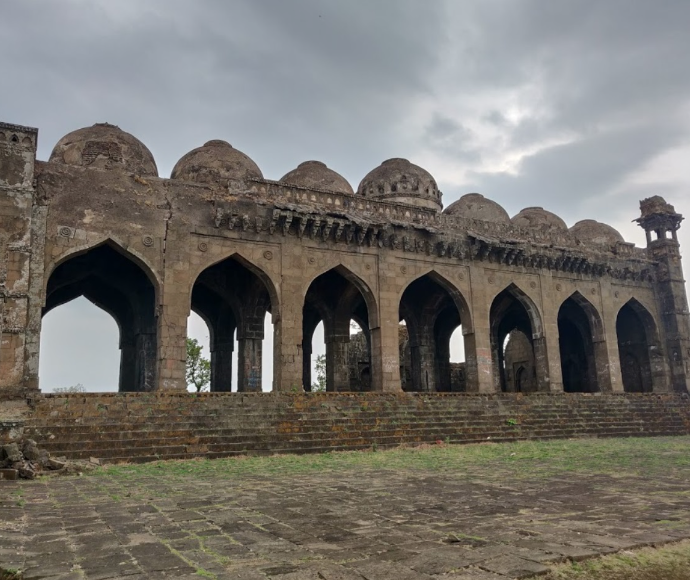The Two Fort Gates (inner and outer)
The fort is said to have been built in 1403 CE. It covers an area of 76 acres with a perimeter of about 2515 yards. Originally, it had only one entrance and later on, one more gate was added. The first gatewas built using lime mortar. The arch and the sides are built with granite stones in lime mortar and iron. The doors are made of strong wood. There is a small door to its left side, for individuals to enter. Its massive wooden doors aredressed in granite stones with cement mortar. On the top of the gateway is a Persian inscription which exhorts the devout muslim to trust in Ali and Muhammad to ward off the difficult moments of life.
Tags
Similar Places

Ballarpur Fort
Ballarpur Fort is the oldest area in Ballarpur. It was built by Gond King Khandkya Ballal Sah in 13th century. On the death of Gond king Surja alias Ser Sah, his son Khandkya Ballal came to the throne. This prince had tumours all over his body. He was looked after by his wise and beautiful wife. When no remedy could heal Khandkya she induced him to leave Sirpur and reside on the northern bank of the Wardha, where he erected a fort named Ballarpur. Khandkya Ballal thus founded Ballarpur. Later he left Ballarpur and erected another fort in Chandrapur.

Gawilgad Fort
Gawilghur also Gawilgarh or Gawilgad was a well-fortified mountain stronghold of the Maratha Empire north of the Deccan Plateau, in the vicinity of Melghat Tiger Reserve, Amravati District, Maharashtra. It was successfully assaulted by an Anglo-Indian force commanded by Arthur Wellesley on 15 December 1803 during the Second Anglo-Maratha War. The campaign to take Gawilghur forms the background of the novel Sharpe's Fortress by Bernard Cornwell, the third in a series of books covering the hero's time in the British army in India during the Napoleonic era. The fort takes its name from the Gawli (cow herds) who inhabited the Berar for centuries. Earlier the fort was likely just made of mud as were several such areas in the region. The exact date of construction is not known but the Persian historian, Firishta, records that Ahmed Shah Wali, the ninth king of the Muzaffarid dynasty built Gawilgarh when he was encamped at Ellichpur in 1425. Likely this was the date when major fortification was carried out.



